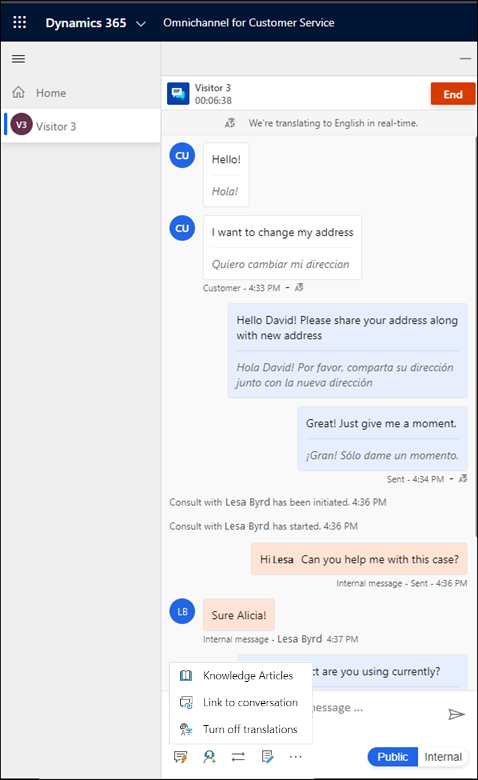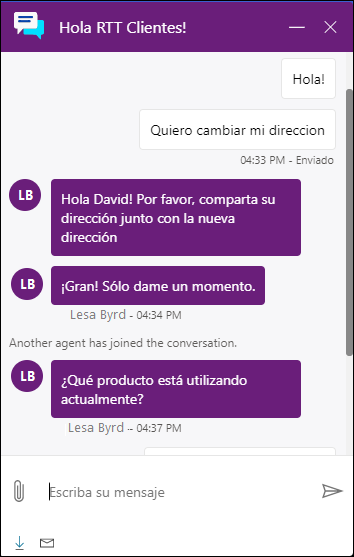Use real-time translation of conversations for agents and customers
Omnichannel for Customer Service offers a suite of capabilities that extend the power of Dynamics 365 Customer Service Enterprise to enable organizations to instantly connect and engage with their customers across digital messaging channels. An additional license is required to access Omnichannel for Customer Service. For more information, see the Dynamics 365 Customer Service pricing overview and Dynamics 365 Customer Service pricing plan pages.
Important
This feature is intended to help customer service managers or supervisors enhance their team's performance and improve customer satisfaction. This feature is not intended for use in making, and should not be used to make, decisions that affect the employment of an employee or group of employees, including compensation, rewards, seniority, or other rights or entitlements. Customers are solely responsible for using Dynamics 365 Customer Service, this feature, and any associated feature or service in compliance with all applicable laws, including laws relating to accessing individual employee analytics and monitoring, recording, and storing communications with end users. This also includes adequately notifying end users that their communications with agents may be monitored, recorded, or stored and, as required by applicable laws, obtaining consent from end users before using the feature with them. Customers are also encouraged to have a mechanism in place to inform their agents that their communications with end users may be monitored, recorded, or stored.
When language translation is enabled for conversations that are exchanged between the agent and customer or among agents internally, agents can view the conversation in the language that's set as the default for them. The customer receives the agent's messages in the language they used for initiating the chat. This feature removes the necessity of routing conversations only to agents who know the language being used by the customer.
How language translation of conversations works
When a customer initiates a chat conversation on the portal, irrespective of the language used by the customer, the assigned agent receives the chat text in the language that's set as the default. The language translation happens in real time. For example, if a customer initiates a chat in Spanish, the message text appears to an English-speaking agent in Spanish along with the translated English version. The agent has the option to view and respond to the chat in the customer's language or the agent's default language.
If the agent has to consult a peer or supervisor, it can be done in the language preferred between the agent and peer or agent and supervisor, which can be different from the language used between the agent and customer. The chat transcripts are saved in the languages used in the conversation.
The agent can see the following details pertaining to the feature:
Information about the language in which the agent receives the chat content is displayed at the top of the chat window.
The chat content is displayed in the customer's language and translated language.
The agents can turn on or turn off the translation for each conversation by using the More commands button on the chat window.
The following image shows a sample screenshot of the agent experience.

The following image shows a sample screenshot of the customer experience.

See also
View customer information on Active Conversation form
View communication panel
Feedback
Coming soon: Throughout 2024 we will be phasing out GitHub Issues as the feedback mechanism for content and replacing it with a new feedback system. For more information see: https://aka.ms/ContentUserFeedback.
Submit and view feedback for